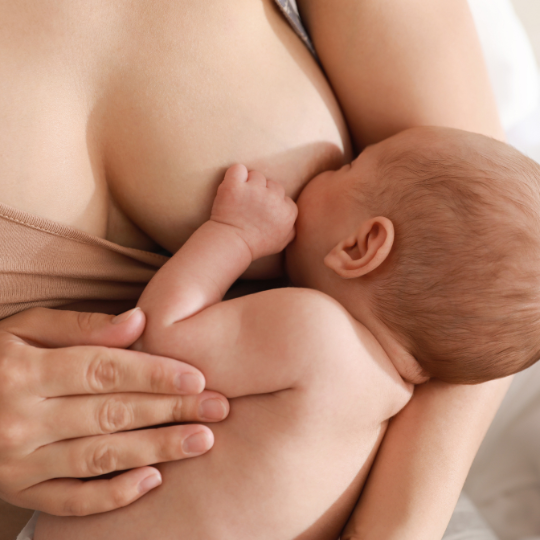A newborn baby will breastfeed every 2-3 hours during the day and sometimes through the night. It is a wonderful bonding experience but he hours and hours of holding your baby can lead to aches and pains.
A newborn baby will nurse every 2-3 hours during the day and sometimes through the night. It is a wonderful bonding experience, and the benefits to the baby are well researched and understood. The hours and hours of holding baby and trying different feeding positions can lead to aches and pains in the back, neck, shoulders and even the wrists!
Reasons for the aching body during breastfeeding:
- Poor posture
- Stress and tension of this new addition to the family
- Physiological changes of pregnancy that affect the ligaments making the joints less stable
- Abdominal and pelvic floor changes that affect the core postural muscles
- Sleep deprivation
- Pre-existing aches and pains
Here are some tips to protect your back and joints while breastfeeding your baby:
1. Breathe
Sometimes a new mom can be so nervous about doing “things right” that every muscle is tense; shoulders are hiked, arms and hands clenched and she can even forget to breathe! Deep belly breathing will keep muscles relaxed, and it also helps with the “let down” reflex
2. Posture, Posture, Posture
- The common saying of “bring the baby to your breast and not bring the breast to your baby” is truly important. Slouching, and bringing the shoulders and head forward, will put undue strain on the entire back, neck and arms.
- Pillows are the best allies when it comes to keeping the joints supported and in neutral position. Even if a baby bop or “breast friend” pillow is used, an extra pillow may be necessary in the beginning. A pillow behind the back is also a good way to keep the spine in neutral when sitting..
- Protect those joints! Be mindful of keeping shoulders relaxed and down. Keep the wrists in neutral position and avoid awkward twists of the hand when holding baby.
- Taking breaks from gazing at the beautiful baby will also help the neck from getting strained.
- Alternate positions! Sitting isn’t always the best position because of the tendency to hunch, but also because a new mom may have a sore pelvic floor or tailbone. So changing positions to sidelying, semi-reclined all are great positions to try, still be mindful of keeping the joints in a neutral position!
- Use a baby carrier for nursing. There are wonderful options with baby ring slings or baby wraps that can help support the baby’s weight and are great if nursing outside the home. It also allows breastfeeding to take place in a standing position!
3. Laid back breastfeeding or biological nuturing
The La Leche league has great information on laid back breastfeeding. The positions are reclined so both mom and baby are in a very relaxed posture. It also supports more skin to skin contact during nursing.
4. Exercise and Stretches
These simple stretches can be done immediately after breastfeeding:
- Wall Pec Stretch
- Place palm and forearm on the doorway or wall, lift chest and turn body away from the wall. Feel a gentle stretch in the upper chest. Hold for a count of 3-5 breaths.
- Sitting Pec Stretch
- Keeping spine in neutral, clasp your hands behind your back. Squeeze shoulder blades together while gently moving hands away from body. Hold for 3-5 breaths.
- Sitting in neutral position. This can be done with or without a theraband.
- Bend elbows to 90 degrees, squeeze shoulder blades back and together and gently rotate the forearms out to the side. Hold 5 seconds repeat 5 times.
5. Last but not least, a new Mom should try to find the time to take care of herself.
Taking baths, going for walks, maybe getting a massage all can go a long way!
6. If the aches and pains persists…
Please have a consultation with one of our physical therapists at N2 PT. Our physical therapist would do a complete evaluation and devise an individualized treatment plan. Treatment could include:
- Manual therapy:
- Soft tissue and joint mobilization
- Trigger point dry needling, if necessary
- Individualized postural and ergonomic advice
- Individualized home exercise program
- Kinesiology taping for shoulder blades or wrists
If you or someone you know are experiencing any musculoskeletal pain after having a baby, please contact any of our four offices.
References
- Roberts, Debbie: Clinical Lactaion, 1 12/2011, vol.2 no.4 pp 13-20(8)
- Mbada, et al: Is Baby-Friendly Breastfeeding Mother-Friendly? Journal of Women’s Health Physical Therapy January/Aprio 2013 Volume 37-Issue 1-p19-28

